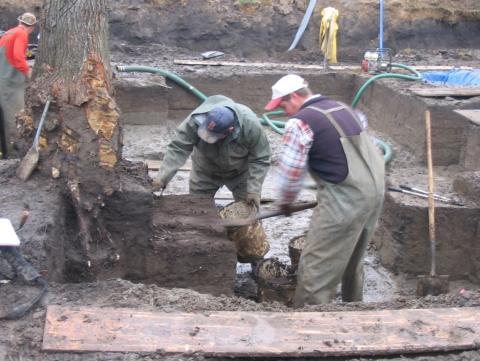
Glamdring, Andúril, Sting. Some weapons have names. Beowulf used the sword Hrunting, King Arthur had Excalibur, and of course the hammer of Thor is Mjölnir. In The Spirit of the Sword and Spear (Cambridge Archaeological Journal 23(1):55-67), Mark Pearce references the named weapons of myth and history to argue that swords and spears can have individual identities, and thus, potentially, biographies. As he says, “I do not mean to argue that prehistoric weapons were regarded as equivalent to humans, but rather that they had some sort of spiritual persona…with its own specific agency, believed to have its own intention and volition. This might have been perceived as some sort of in-dwelling spirit.” (p. 55)
From these named weapons, he attempts to look farther back in time to ascertain whether swords and other weapons from the Iron Age of Europe also were assigned identities. There are, in fact, at least two Iron Age swords with names stamped onto their blades, although the names could belong to the sword, the owner, or the blacksmith.
More common are swords and spears that have faces (or geometric designs that could be interpreted as faces), which, Pearce argues, may also indicate that they were given an identity. He is aware that “It is dangerous to use analogies from myth to reconstruct prehistoric reality” (p. 64) and “it is certainly true that human beings have a tendency to interpret unstructured visual stimuli in meaningful ways” and “It might be easy to over-interpret stimuli that may seem to depict faces.” (p. 62)
Against these statements, he can muster only a weak defense: “But when looking at the spearheads and swords illustrated in this article, the faces are very striking… It is clearly impossible to demonstrate conclusively that faces are meant, but it does seem evident.” (p. 62)
It does not help that “in some cases the decoration tends towards the abstract and can be recognized as indicating a face only by reference to, and comparison with, the more figurative examples.” (p. 62)
Yet his main idea is intriguing. Perhaps a less descriptive and more analytical approach would produce stronger results.
The article is open access and available to download at the Cambridge Archaeological Journal.
originally posted on Adequacy (2013)
Reference:

